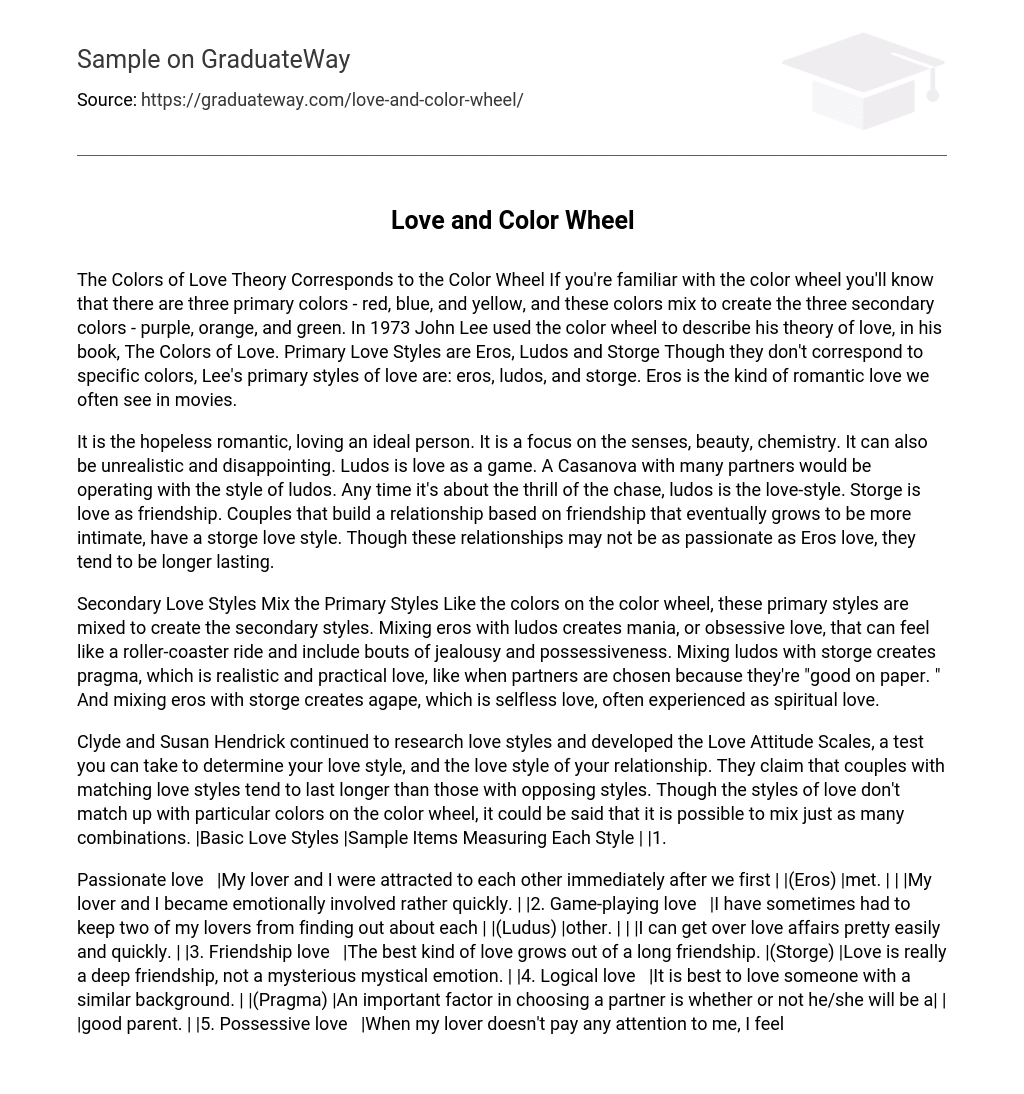The Colors of Love Theory Corresponds to the Color Wheel If you’re familiar with the color wheel you’ll know that there are three primary colors – red, blue, and yellow, and these colors mix to create the three secondary colors – purple, orange, and green. In 1973 John Lee used the color wheel to describe his theory of love, in his book, The Colors of Love. Primary Love Styles are Eros, Ludos and Storge Though they don’t correspond to specific colors, Lee’s primary styles of love are: eros, ludos, and storge. Eros is the kind of romantic love we often see in movies.
It is the hopeless romantic, loving an ideal person. It is a focus on the senses, beauty, chemistry. It can also be unrealistic and disappointing. Ludos is love as a game. A Casanova with many partners would be operating with the style of ludos. Any time it’s about the thrill of the chase, ludos is the love-style. Storge is love as friendship. Couples that build a relationship based on friendship that eventually grows to be more intimate, have a storge love style. Though these relationships may not be as passionate as Eros love, they tend to be longer lasting.
Secondary Love Styles Mix the Primary Styles Like the colors on the color wheel, these primary styles are mixed to create the secondary styles. Mixing eros with ludos creates mania, or obsessive love, that can feel like a roller-coaster ride and include bouts of jealousy and possessiveness. Mixing ludos with storge creates pragma, which is realistic and practical love, like when partners are chosen because they’re “good on paper. ” And mixing eros with storge creates agape, which is selfless love, often experienced as spiritual love.
Clyde and Susan Hendrick continued to research love styles and developed the Love Attitude Scales, a test you can take to determine your love style, and the love style of your relationship. They claim that couples with matching love styles tend to last longer than those with opposing styles. Though the styles of love don’t match up with particular colors on the color wheel, it could be said that it is possible to mix just as many combinations. |Basic Love Styles |Sample Items Measuring Each Style | |1.
Passionate love |My lover and I were attracted to each other immediately after we first | |(Eros) |met. | | |My lover and I became emotionally involved rather quickly. | |2. Game-playing love |I have sometimes had to keep two of my lovers from finding out about each | |(Ludus) |other. | | |I can get over love affairs pretty easily and quickly. | |3. Friendship love |The best kind of love grows out of a long friendship. |(Storge) |Love is really a deep friendship, not a mysterious mystical emotion. | |4. Logical love |It is best to love someone with a similar background. | |(Pragma) |An important factor in choosing a partner is whether or not he/she will be a| | |good parent. | |5. Possessive love |When my lover doesn’t pay any attention to me, I feel sick all over. | |(Mania) |I cannot relax if I suspect that my lover is with someone else. |6. Selfless love |I would rather suffer myself than let my lover suffer. | |(Agape) |What ever I own is my lover’s to use as he/she chooses. | Reference: http://video. about. com/psychology/What-Is-the-Color-Wheel-Model-of-Love-. htm http://psychology. about. com/od/loveandattraction/a/theoriesoflove. htm Janell L. Carrol (2009). Sexuality Now: Embracing Diversity Wadsworth Publishing Company 170-171 Lee JA (1973). Colours of love: an exploration of the ways of loving. Toronto: New Press.





